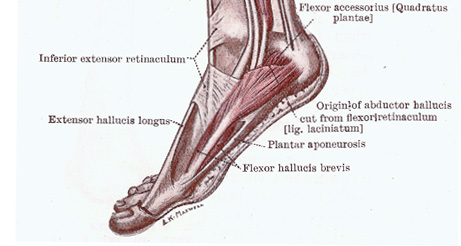
The human foot consists of 26 bones which form two arches. In addition, the foot consists of other elements like ligaments, muscles etc. Foot pain comes as a result of injury or damage to any of these elements.
Causes of foot arch pain
There are many different causes of foot arch pain. In many cases the direct reason for this pain is plantar fasciitis. This thick connective tissue can lead to problems in the heel too. It is not unusual to experience heel pain and arch pain at the same time. Some other causes of foot arch pain include overuse of feet, arthritis, ligament sprains, force trauma, improper alignment, joint injury etc. Sometimes patients have a combination of these factors like strains and sprains or fractures and bruises.
Symptoms
Plantar fascia strains usually result in tenderness and pain that can be noticed on the bottom of the foot.
This pain can intensify or decrease depending on the patient’s activity. It is highly recommended to remain inactive when you notice this type of pain.
The so-called point tenderness is a clear sign of a problem in a specific point of the foot. This is sometimes a sign of fracture. Swelling, discoloration, twisted toes are some other symptoms that something is not right in the foot arches.
It is good to know that this pain usually goes away on its own. All it takes is to rest more and the pain will be gone after a few days. However, if the pain remains and even intensifies to the point where you cannot finish your usual daily tasks or you simply cannot walk properly, it is best to visit your GP/Podiatrist. In addition, if the pain is very intense or some parts of your foot are deformed you should consult your Doctor/Podiatrist as soon as possible.
When you visit the Doctor/Podiatrist you will be given a set of examinations and tests in order to determine what the exact cause of your foot arch pain is. Only by finding the right cause of this pain will the doctor be able to make a diagnosis and recommend an appropriate treatment. The tests include visual and physical examination. In addition, some doctors might use X-Ray, CT or MRI scans of this area in case conventional tests can’t provide precise results. Sometimes the pain occurs due to nerve damage and special tests can confirm this.
Treatment
Plenty of rest, ice application, compression and elevation are the first things you should do when you get arch foot pain. At a later stage, heat and anti-inflammatory gels can be helpful and also stretching exercises for the foot. It helps if you stretch your plantar ligament and calf muscles as much as possible. You should also do this after the symptoms are gone.
Here is a video of stretching exercises for the foot that you should try to do everyday to help the pain:
Arch support insoles
Arch support insoles can also be useful as they will prevent some stretching. Long term solutions lie in the use of insoles and orthotics that will correct any imbalance as well as support the log arch.
You should rest your foot while the condition is present and avoid any long distance walking and strenuous sport activities.
For more advice about foot arch pain, please contact us now via email Send Email or our blog post below.


Leave a Reply